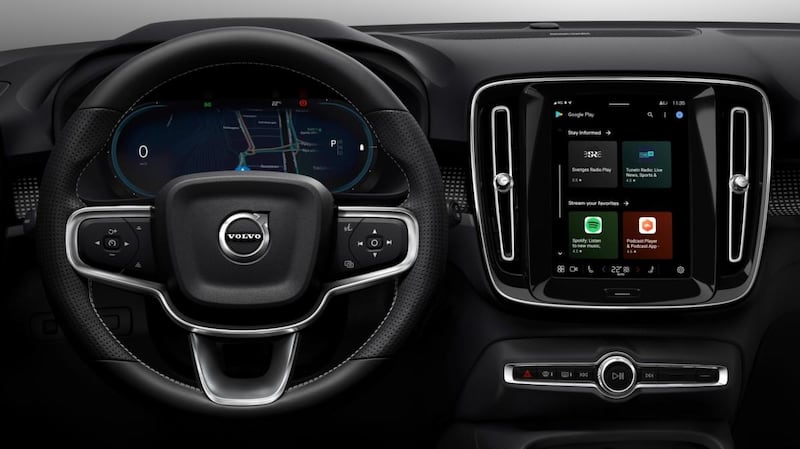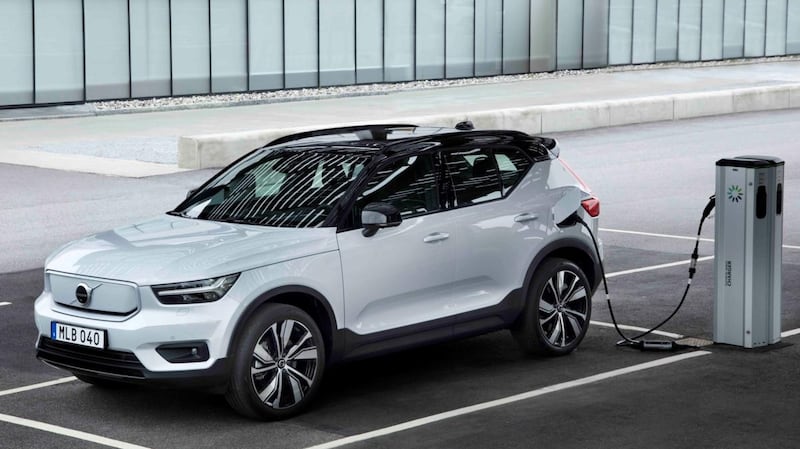Who would have thought the Swedes would be this late to full electric? Given how innovative Volvo has been in the last decade or so, it’s surprising this is their first all-electric model on the market. While the brand embraced plug-in hybrid technology quite early, it has been slow to abandon the combustion engine entirely.
Some may quibble that its electric sub-brand Polestar introduced an all-electric model in 2019, but it’s on sale in only a very limited numbers of markets and is at pains to point out that it’s a separate brand from Volvo.
Whatever the nuances of that debate, the decision to opt for the XC40 as the entry point for the Volvo brand makes sense. Crossovers are where the market is at these days and this award-winning model – winner of the European Car of the Year title in 2018 – is its best-seller in many markets. This chic Swede deserved the first electric surge.
It scores on a number of other fronts as well, not least in terms of performance. This all-electric XC40 all-wheel-drive pumps out a very impressive 408bhp, achieving 0-100km/h in just 4.9 seconds. That’s remarkably pacy for a midsized family crossover, and it feels every bit as fast on the road. For those who care, that’s faster than the new Ford Mustang Mach-E.
Agile
It’s also surprisingly agile. Even though it is hoisted up on crossover high heels, it can hold its line in the bends. There are times when the cosseted ride feels a little too numb, disengaged from the road surface, but in the main this car manages to blend comfort and performance better than any fast Volvo I’ve driven to date.
This idea of a fast family Volvo chimes with the brand’s efforts in the past. Some may recall the 850R estates racing in the 1990s touring car championships. The problem was that most of them had horribly hard ride quality, suited more to the racetrack than the average road. With this electric XC40, they somehow got the mix right.

Another trait of fast Volvos in the past was the ability to retain their practicality, and the XC40 delivers on this front as well. That's unsurprising, for it was one of the key traits that has won it so many plaudits to date. As we know from Ikea, the Swedes manage storage quite well.
And of course it loaded with comfort features and gadgets. Along with the usual array of safety tech, you also get a nine-inch touchscreen control screen in the centre console. However, Volvo has also done a deal with Google to run its maps and voice-recognition system in the car. It's at times intuitive, but often frustrating.
In terms of economy, we seemed to be managing to hit close to the official 400km WLTP range from the 78kWh battery pack. That has become increasingly common as battery packs start to live up to their promises, or perhaps get a more realistic understanding of everyday driving styles. On a 7-11kW wall box a full charge will take about eight hours.
When it comes to electric cars, the problem for many car companies remains the batteries, in terms of size and cost. The lithium-ion packs are still relatively bulky, so if you want a range between charges in the region of 400km or so, it’s going to mean significant weight and size. And cost. The crucial figure to watch when it comes to battery packs is the kilowatt hours (kWh). In very back-of-the-envelope terms, the more kWh in your battery pack, the greater the range.
Battery costs
The problem is that for years the cost of this battery power was exorbitant. At a time when car company bean-counters were cutting back on soft plastics to save €10 per car, the bills for batteries in 2010 were exceeding $1,100 (€930) per kWh. That’s largely why the initial electric cars had such poor range: to keep the price affordable you had to limit the battery size.
The good news is that in the last decade battery pack prices have fallen dramatically, by as much as 89 per cent according to Bloomberg’s 2020 battery price survey. It predicted average battery pack prices will be close to $100/kWh by 2023. Meanwhile, new cathode chemistries are driving prices down even further.
Which is a long-winded way of saying that for the premium car buyer, the age of relatively affordable electric cars is near or here, depending on your budget.
Starting at €64,314, the all-electric XC40 isn’t cheap, coming in at nearly €12,000 more than the plug-in hybrid version of the same car, though of course you don’t have the same performance.
For a model range that starts at €41,250, the price walk to full electric is steep. Its €60,000-plus price tag is in the same bracket as the larger XC60 and some buyers may look at this and wonder if they are best to wait.

For those willing to take the leap, this Volvo makes a great case for electric power, and has a slight head start in the market against rivals such as the Ford Mustang Mach-E and the BMW iX3, while an Irish arrival date for Tesla’s Model Y crossover is still to be confirmed.
There are several other worthy rivals that are better priced and just as practical, including the trio of Audi Q4, Skoda Enyaq and VW ID.4, but again they don’t match the Volvo for pace.
For years the Swedes tried to get the recipe for practicality and performance right, but it never quite worked out. It seems they’ve now found the missing ingredient: electric power.
Lowdown: Volvo XC40 Recharge all-electric AWD
Power: Two electric motors (front and rear) putting our a combined 408bhp, powered by a 78kWh lithium-ion battery pack
0-100km/h: 4.9 seconds
Motor tax: €120
Range (WLTP): 418km
Price: €68,258 as tested (XC40 Recharge starts at €64,314)
Verdict: Smart premium styling with top-end performance











